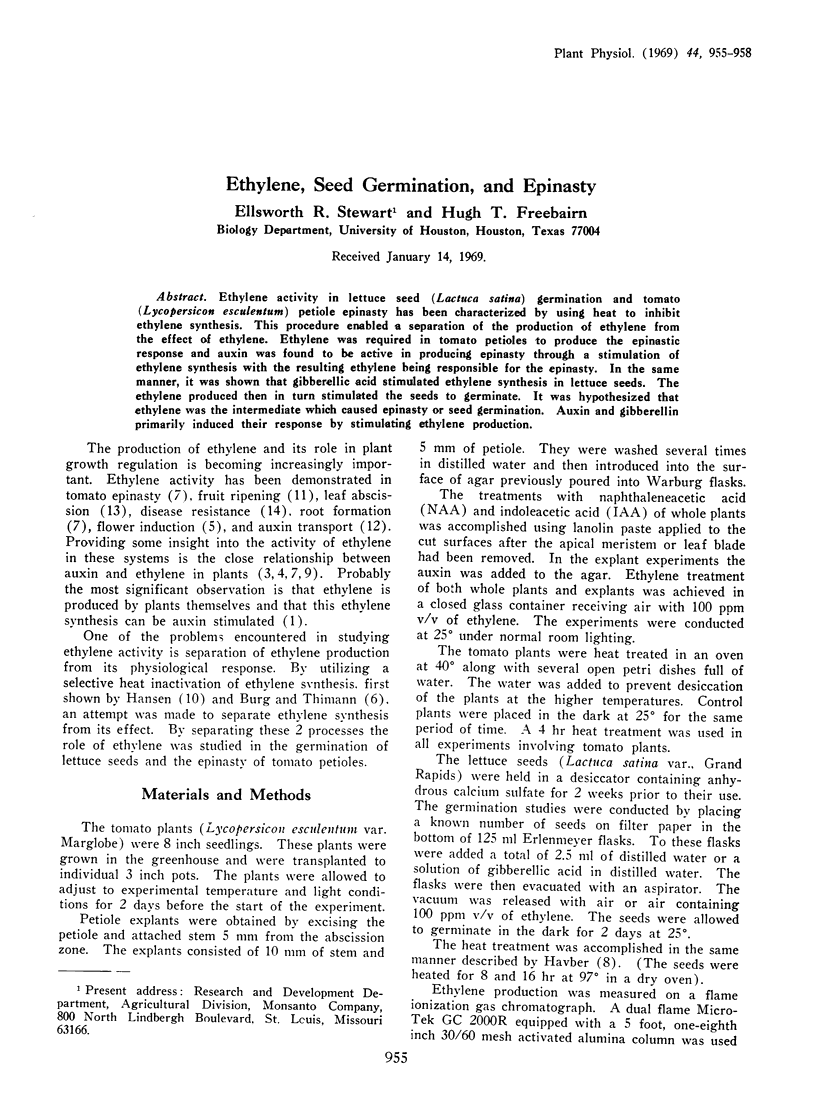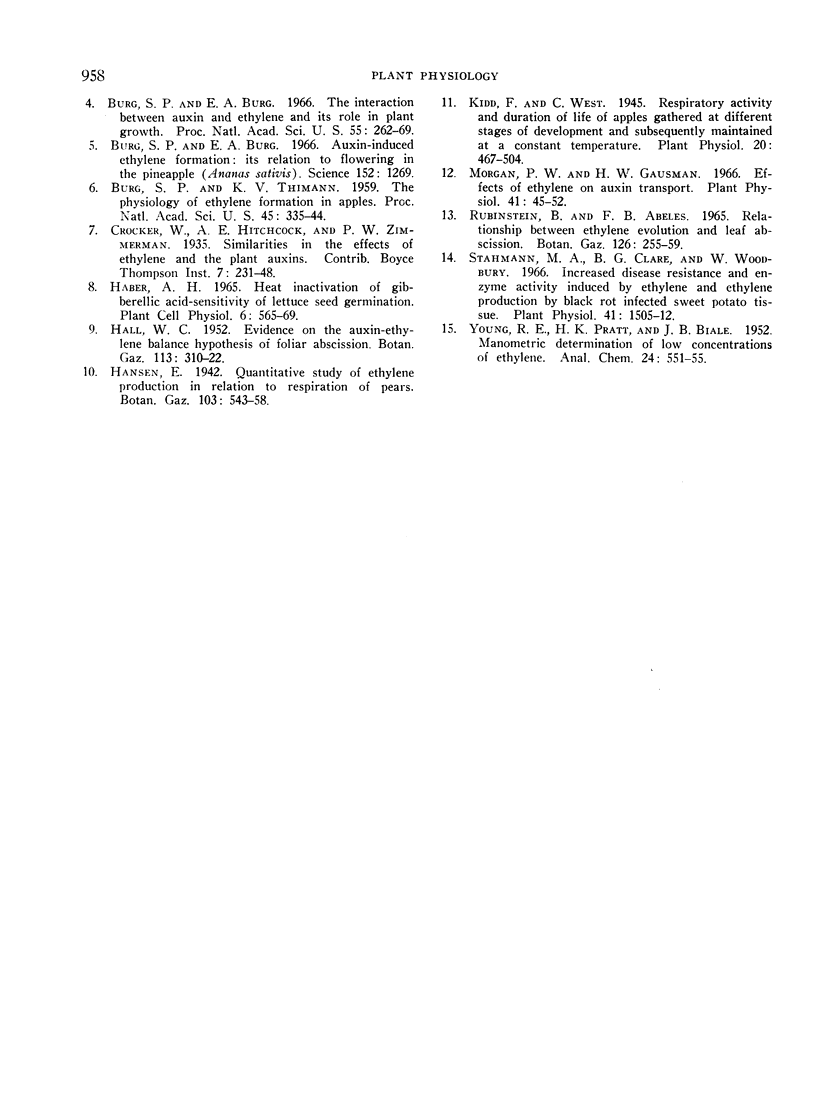Abstract
Ethylene activity in lettuce seed (Lactuca satina) germination and tomato (Lycopersicon esculentum) petiole epinasty has been characterized by using heat to inhibit ethylene synthesis. This procedure enabled a separation of the production of ethylene from the effect of ethylene. Ethylene was required in tomato petioles to produce the epinastic response and auxin was found to be active in producing epinasty through a stimulation of ethylene synthesis with the resulting ethylene being responsible for the epinasty. In the same manner, it was shown that gibberellic acid stimulated ethylene synthesis in lettuce seeds. The ethylene produced then in turn stimulated the seeds to germinate. It was hypothesized that ethylene was the intermediate which caused epinasty or seed germination. Auxin and gibberellin primarily induced their response by stimulating ethylene production.
Full text
PDF



Selected References
These references are in PubMed. This may not be the complete list of references from this article.
- Abeles F. B., Rubinstein B. Regulation of Ethylene Evolution and Leaf Abscission by Auxin. Plant Physiol. 1964 Nov;39(6):963–969. doi: 10.1104/pp.39.6.963. [DOI] [PMC free article] [PubMed] [Google Scholar]
- Burg S. P., Burg E. A. Auxin-induced ethylene formation: its relation to flowering in the pineapple. Science. 1966 May 27;152(3726):1269–1269. doi: 10.1126/science.152.3726.1269. [DOI] [PubMed] [Google Scholar]
- Burg S. P., Burg E. A. The interaction between auxin and ethylene and its role in plant growth. Proc Natl Acad Sci U S A. 1966 Feb;55(2):262–269. doi: 10.1073/pnas.55.2.262. [DOI] [PMC free article] [PubMed] [Google Scholar]
- Burg S. P., Thimann K. V. THE PHYSIOLOGY OF ETHYLENE FORMATION IN APPLES. Proc Natl Acad Sci U S A. 1959 Mar;45(3):335–344. doi: 10.1073/pnas.45.3.335. [DOI] [PMC free article] [PubMed] [Google Scholar]
- Kidd F., West C. RESPIRATORY ACTIVITY AND DURATION OF LIFE OF APPLES GATHERED AT DIFFERENT STAGES OF DEVELOPMENT AND SUBSEQUENTLY MAINTAINED AT A CONSTANT TEMPERATURE. Plant Physiol. 1945 Oct;20(4):467–504. doi: 10.1104/pp.20.4.467. [DOI] [PMC free article] [PubMed] [Google Scholar]
- Morgan P. W., Gausman H. W. Effects of ethylene on auxin transport. Plant Physiol. 1966 Jan;41(1):45–52. doi: 10.1104/pp.41.1.45. [DOI] [PMC free article] [PubMed] [Google Scholar]
- Stahmann M. A., Clare B. G., Woodbury W. Increased disease resistance and enzyme activity induced by ethylene and ethylene production of black rot infected sweet potato tissue. Plant Physiol. 1966 Nov;41(9):1505–1512. doi: 10.1104/pp.41.9.1505. [DOI] [PMC free article] [PubMed] [Google Scholar]


